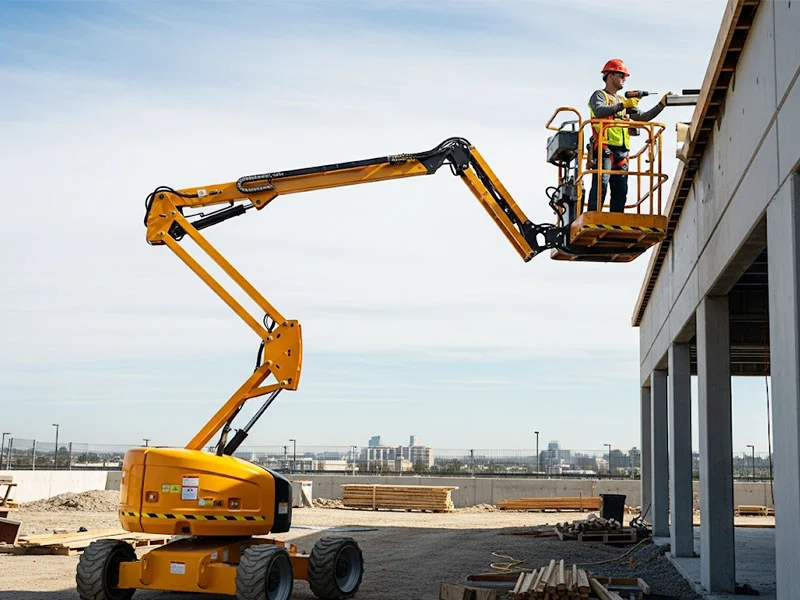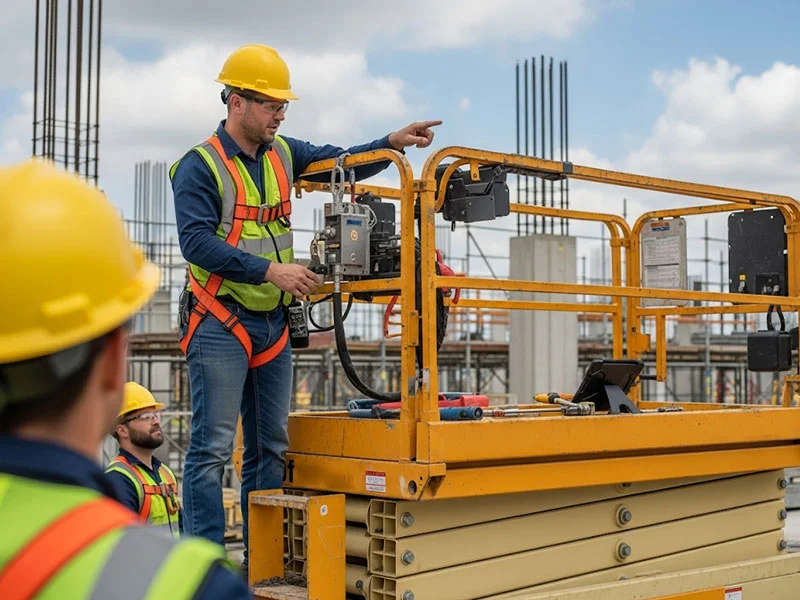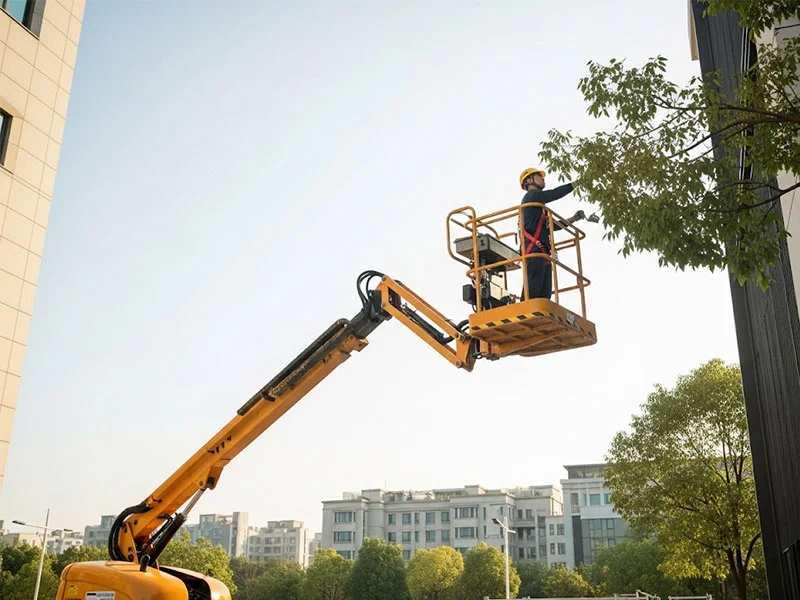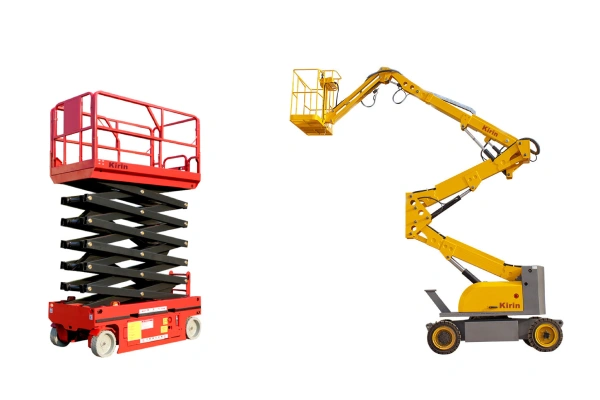Introduction: Reaching New Heights, Safely?
When you need to perform work at elevated heights, efficiency and safety are paramount. For many tasks, a one-man boom lift offers a convenient and effective solution. From changing lightbulbs in a warehouse to inspecting building facades, these compact aerial work platforms provide unparalleled access. But a common question arises: Are one-man boom lifts safe? The short answer is yes, when used correctly and maintained properly. This blog post will delve into the safety aspects of the one-man boom lift, exploring its features, potential hazards, and the essential practices that ensure a secure working environment.
Understanding the One-Man Boom Lift
A one-man boom lift, also often referred to as a single man boom lift, is a type of aerial work platform designed to lift one person and their tools to elevated work areas. These lifts are characterized by their compact size, maneuverability, and ability to navigate tight spaces where larger equipment cannot. They typically feature a work platform or basket attached to a hydraulic boom, which can extend vertically and, in some cases, horizontally. Their design prioritizes a small footprint and ease of use, making them ideal for a variety of indoor and outdoor applications.

Built-in Safety Features: Designed for Protection
Modern one-man boom lift models are engineered with a multitude of safety features to protect the operator. These include:
- Emergency Stop Buttons: Located on both the platform and ground controls, these instantly shut down all lift functions in an emergency.
- Tilt Sensors: These systems alert the operator and often limit boom movement if the lift is on an excessive slope, preventing tip-overs.
- Overload Sensors: To prevent instability, these sensors warn the operator and prevent operation if the weight limit of the platform is exceeded.
- Guardrails and Lanyards: The platform is equipped with sturdy guardrails, and tie-off points are provided for fall protection harnesses, which are crucial when operating a single man boom lift.
- Pothole Protection: Some models feature automatic deployable stabilizers to prevent tipping when driving over uneven surfaces.
- Automatic Braking Systems: These engage automatically when the lift is stopped, even on inclines.
- Non-Slip Platforms: The work platform surface is designed to provide maximum grip, reducing the risk of slips and falls.
Common Hazards and Risks: What to Watch Out For
Despite their safety features, operating a one-man boom lift isn’t without its risks if proper precautions aren’t taken. Common hazards include:
- Tip-overs: This is perhaps the most serious risk, often caused by exceeding weight limits, operating on uneven terrain, high winds, or extending the boom too far without proper stabilization.
- Falls from Height: While guardrails and harnesses mitigate this, improper use of safety equipment or unexpected jolts can lead to falls.
- Electrocution: Contact with overhead power lines is a significant danger. Always maintain safe distances.
- Crushing Injuries: Getting caught between the lift and a structure or object, especially during movement, can cause severe injuries.
- Mechanical Failure: Though rare with proper maintenance, component failure can occur, leading to loss of control.
- Collision: While operating the one-man boom lift, collisions with other equipment, vehicles, or structures are possible, particularly in congested work areas.
Mitigating Risks: Best Practices for Safe Operation
To ensure the safety of a one-man boom lift operator and those around them, adherence to best practices is essential:
- Pre-Operation Inspection: Always conduct a thorough visual and functional inspection before each use. Check controls, tires, fluid levels, safety devices, and structural integrity of the single man boom lift.
- Site Assessment: Evaluate the work area for hazards like uneven ground, potholes, overhead obstructions (especially power lines), and pedestrian traffic.
- Proper Positioning: Ensure the lift is on a stable, level surface. Use outriggers or stabilizers if equipped and necessary.
- Weight Limits: Never exceed the manufacturer’s rated weight capacity for the platform, including the operator, tools, and materials.
- Maintain Clearances: Be aware of your surroundings and maintain safe distances from power lines, buildings, and other equipment.
- Weather Conditions: Do not operate a one-man boom lift in high winds, lightning, or severe weather conditions.
- Personal Protective Equipment (PPE): Always wear a properly fitted full-body harness and lanyard, connected to an approved anchor point on the platform. Hard hats, safety glasses, and sturdy footwear are also crucial.
- Controlled Movements: Operate the lift smoothly and deliberately, avoiding sudden starts, stops, or jerky movements.
- Never Modify the Lift: Unauthorized modifications can compromise the structural integrity and safety features of the single man boom lift.

The Indispensable Role of Training and Certification
One of the most critical factors in ensuring the safety of a one-man boom lift is proper training and certification. Operators must be thoroughly trained on:
- The specific model of lift they will be operating.
- All manufacturer’s warnings, instructions, and safety decals.
- Pre-operation inspections and functional checks.
- Safe operating procedures, including emergency protocols.
- Understanding load capacities and stability limits.
- Fall protection requirements and equipment use.
- Hazard recognition and avoidance.
Certification demonstrates that an operator has received the necessary training and possesses the skills to safely operate a one-man boom lift. Untrained operation is a leading cause of accidents.
Maintenance and Regular Inspections: Keeping Your Lift in Top Shape
Just like any piece of heavy machinery, a one-man boom lift requires consistent maintenance and regular inspections to remain safe and reliable. This includes:
- Daily Pre-Operation Checks: As mentioned, a quick check before each use is vital.
- Periodic Inspections: Following manufacturer guidelines, these more in-depth inspections should be performed by qualified personnel.
- Annual Inspections: A comprehensive annual inspection by a certified mechanic is typically required to ensure all components are in safe working order.
- Timely Repairs: Any defects or issues identified during inspections must be repaired immediately by qualified technicians. Never operate a damaged single man boom lift.
- Record Keeping: Maintain detailed records of all inspections, maintenance, and repairs.
When to Opt for a One-Man Boom Lift (and When Not To)
A one-man boom lift is an excellent choice for:
- Tasks requiring access for a single person and light tools.
- Indoor applications with limited space and narrow aisles.
- Maintenance tasks, inspections, and small repair jobs.
- Work on flat, stable surfaces.
However, a one-man boom lift may not be suitable for:
- Tasks requiring multiple workers or heavy materials at height.
- Work on extremely uneven or soft terrain.
- Outdoor work in consistently high winds or severe weather.
- Jobs requiring significant horizontal reach that exceeds the lift’s capabilities.
- When a scissor lift or larger boom lift would be more appropriate for the scope of work.

Conclusion: Safety First, Always
So, are one-man boom lifts safe? Absolutely, when operated by trained and certified individuals who adhere to established safety protocols and when the equipment is properly maintained. These compact and versatile machines offer significant advantages for various elevated tasks. By understanding their features, recognizing potential hazards, implementing best practices, and committing to ongoing training and maintenance, you can confidently and safely utilize a one-man boom lift to reach new heights, securely.
FAQs
Q1: What’s the difference between a one-man boom lift and a scissor lift?
A1: A one-man boom lift typically uses an articulated or telescopic boom to lift a single person, offering more flexibility in horizontal reach and obstacle clearance. A scissor lift uses a series of crisscrossing supports to lift a larger platform vertically, generally offering less horizontal reach but more platform space.
Q2: How often should a one-man boom lift be inspected?
A2: A pre-operation check should be performed daily or before each shift. More comprehensive periodic inspections should follow the manufacturer’s guidelines, typically every three months, and a thorough annual inspection by a qualified professional is required.
Q3: Can I operate a one-man boom lift without training?
A3: No, it is strongly advised and often legally required that all operators of a one-man boom lift receive proper training and certification. Untrained operation significantly increases the risk of accidents.
Q4: What should I do if the boom lift becomes unstable?
A4: Immediately stop all operations, engage the emergency stop, and assess the situation. Do not attempt to correct the instability from the platform. Lower the lift if possible and safe to do so. If unsure, call for assistance.
Q5: Are there any specific wind speed limits for operating a one-man boom lift?
A5: Yes, manufacturers specify maximum wind speeds for safe operation, typically around 28 mph (12.5 m/s) or less. Always consult the operator’s manual for the specific lift you are using and cease operation if wind speeds exceed the limit.


